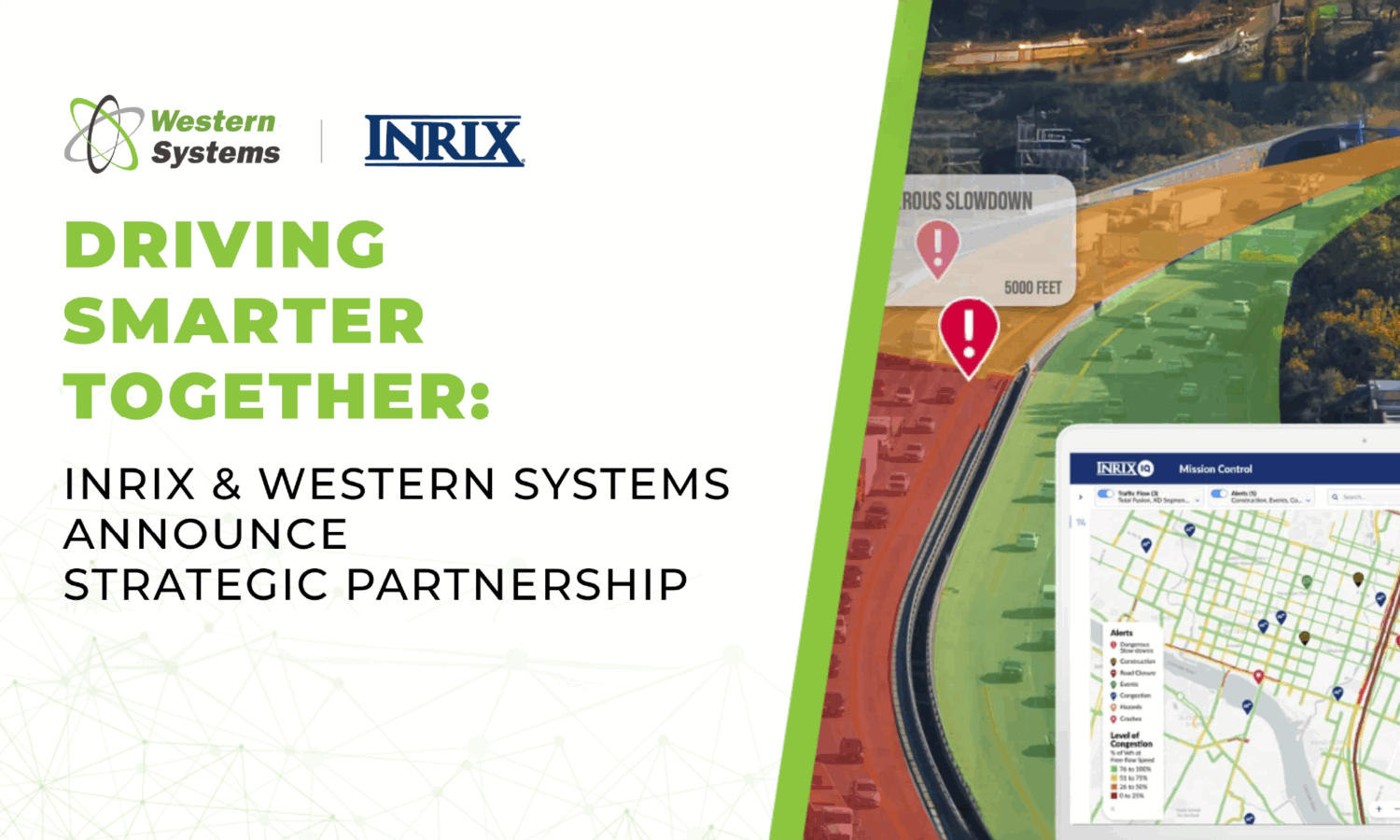- London (227 hours per driver) and Birmingham (134 hours per driver) ranked as the worst cities in the United Kingdom (U.K.) for time lost due to congestion
- London was the only U.K. city in the top 10 most congested cities worldwide, ranking sixth overall
- The A406 from Chiswick Roundabout to Hanger Lane tops the INRIX list of worst corridors in U.K., with the average driver wasting 61 hours per year in congestion. The A23, the Strand and Leeds Road and the A34 in Birmingham make up the top 5
- Edinburgh and London tie for title of U.K. slowest city, with last mile speeds of 7 MPH, meaning it is faster to ride a bike than drive or take the bus. Of the cities studied worldwide, Dublin, Ireland has the slowest city centre speeds, averaging 6 MPH during peak hours
London – February 12, 2019 – INRIX, Inc., the world leader in mobility analytics and connected car services, today published its annual Global Traffic Scorecard that identified and ranked congestion and mobility trends in more than 200 cities across 38 countries.
In the U.K., the 2018 Traffic Scorecard analyzed congestion and its severity of it in the top 20 urban areas. Drivers in the U.K. lost an average of 178 hours a year due to congestion, costing drivers U.K. drivers £7.9 billion in 2018, an average of £1,317 per driver. London (227 hours lost due to congestion) and Birmingham (165 hours) ranked as the two most congested cities in the U.K. by INRIX overall impact of congestion ranking.
London drivers lost up to £1,680 per year due to congestion, followed by Edinburgh (£1,219), Manchester (£1,157), and Leicester (£1,145). Glasgow had the lowest cost of congestion among the U.K. cities studied at £736 per driver.
“Congestion costs Brits billions of pounds each year. Unaddressed, it will continue to have serious consequences for national and local economies, businesses, and citizens in the years to come,” said Trevor Reed, transportation analyst at INRIX. “In order to avoid traffic congestion becoming a further drain on our economy, it is increasingly obvious that authorities need to adapt. With the help of new and innovative intelligent mobility solutions, we can begin to tackle the transportation issues we face today.”
Table 1: 10 Most Congested Urban Areas in the U.K.
| 2018 Impact Rank (2017) | Urban Area | Hours Lost in Congestion (Rank 2018) | Year Over Year Change | Intercity Last Mile-Travel Time (minutes) | Intercity Last-Mile Speed (MPH) | Cost of Congestion per Driver |
| 1 (1) | London | 227 (1) | 1% | 8 | 7 | £1,680 |
| 2 (2) | Birmingham | 134 (12) | -4% | 5 | 12 | £994 |
| 3 (3) | Glasgow | 99 (16) | 4% | 6 | 13 | £736 |
| 4 (7) | Manchester | 156 (4) | 2% | 6 | 10 | £1,157 |
| 5 (5) | Bristol | 149 (9) | 0% | 8 | 8 | £1,099 |
| 6 (4) | Edinburgh | 165 (3) | 10% | 8 | 7 | £1,219 |
| 7 (8) | Sheffield | 149 (8) | 1% | 6 | 10 | £1,101 |
| 8 (9) | Leicester | 155 (5) | -4% | 6 | 11 | £1,145 |
| 9 (10) | Leeds | 143 (10) | 6% | 5 | 12 | £1,057 |
| 10 (6) | Liverpool | 119 (13) | -16% | 6 | 9 | £878 |
The Most Congested Corridors in the U.K.
The A406 from Chiswick Roundabout to Hanger Lane tops the INRIX list of worst corridors in U.K., with the average driver wasting 61 hours per year in congestion. The A23, the Strand and Leeds Road and the A34 in Birmingham make up the top 5.
Table 2: 20 Most Congested U.K. Roads in 2018
| Rank | City | Road Name | From | To | Daily Delay (Mins) | Yearly Delay (Hrs) |
| 1 | London | A406|North Circular Road | Chiswick Roundabout | Hanger Lane | 15 | 61 |
| 2 | London | A23 | Kennington | Thornton Road | 14 | 56 |
| 3 | London | Kingsway|Strand|Fleet|Cannon Street | Russell Square | Monument | 12 | 49 |
| 4 | Leeds | Leeds Road|Saltaire Road | Harrogate Road | Bradford Road | 11 | 44 |
| 5 | Birmingham | A34|Stratford Road | Highfield Road | Highgate Middleway | 11 | 44 |
| 6 | London | A406|North Circular Road | A1 | A10 | 11 | 43 |
| 7 | London | A2103 | Canary Warf | Tower of London | 11 | 43 |
| 8 | Birmingham | A34|Stratford Road | Highgate Middleway | Highfield Road | 11 | 42 |
| 9 | Leeds | Huddersfield Road|Leeds Road | Dewsbury | Huddersfield | 10 | 40 |
| 10 | Manchester | Bury New Road | Higher Broughton | M60 | 9 | 34 |
| 11 | Manchester | Bramhall Lane South | Bridge Lane | Stockport | 8 | 33 |
| 12 | Birmingham | Dudley Port | Black Country New Road | Dudley | 8 | 32 |
| 13 | Manchester | Chapel|Crescent|Broad Street | Victoria Bridge | M60 | 8 | 32 |
| 14 | Glasgow | Great Western Road | Kelvinside | Bearsden Road | 8 | 31 |
| 15 | Birmingham | Soho Hill|Birmingham Road | Icknield Street | M5 | 8 | 30 |
How the U.K. Cities Compare to Top Cities Worldwide
At the global level, Moscow topped the list of the world’s most gridlocked cities (210 hours lost due to congestion) when weighing for population, followed by Istanbul, Bogota, Mexico City and São Paulo. The dominance of Latin American cities should not be a surprise due to their rapid urbanization, high levels of informal settlements, unforgiving topographies and financial volatility. London was the only U.K. city in the Top 10 most congested cited in the world.
Table 3: 10 Most Congested Cities in the World in 2018
| 2018 Impact Rank (2017) | Urban Area | Country | Region | Hours Lost in Congestion (Rank 2018) | Year Over Year Change |
| 1 (1) | Moscow | Russia | Europe | 210 (10 ) | -12% |
| 2 (3) | Istanbul | Turkey | Europe | 157 (32 ) | 6% |
| 3 (2) | Bogota | Colombia | South America | 272 (1 ) | -5% |
| 4 (4) | Mexico City | Mexico | South America | 218 (9 ) | 3% |
| 5 (5) | São Paulo | Brazil | South America | 154 (39 ) | -1% |
| 6 (6) | London | U.K. | Europe | 227 (6 ) | 1% |
| 7 (8) | Rio de Janeiro | Brazil | South America | 199 (13 ) | 15% |
| 8 (7) | Boston, MA | United States | North America | 164 (25 ) | -6% |
| 9 (9) | Saint Petersburg | Russia | Europe | 200 (12 ) | -5% |
| 10 (13) | Rome | Italy | Europe | 254 (2 ) | 16% |
Good data is the first step in tackling congestion. Applying big data to create intelligent transportation systems is key to solving urban mobility problems. INRIX data and analytics on traffic, parking, and population movement help city planners and engineers make data-based decisions to prioritize spending in order to maximize benefits and reduce costs now and for the future.
Commenting on the report, Glynn Barton, Director of Network Management at TfL, said: “We are taking bold action to reduce congestion and improve London’s poor air quality. This includes removing the Congestion Charge exemption for private hire vehicles and reducing the time taken to clear up unplanned incidents, ensuring that roadworks by utilities companies and others are better coordinated. We are also working with the freight industry to encourage more efficient deliveries across the capital.”
“To directly tackle poor air quality, we are ensuring that buses, taxis and private hire vehicles are as green as possible, alongside the introduction of the Ultra-Low Emission Zone this April. In delivering the Mayor’s ambitious plans for 80 per cent of all journeys to be made by public transport, walking or cycling by 2041, our plans will further help tackle congestion across London.”
The key findings of the INRIX 2018 Traffic Scorecard provide a quantifiable benchmark for governments and cities across the world to measure progress to improve urban mobility and track the impact of spending on smart city initiatives.
Please visit our Global Traffic Scorecard for:
- Full 2018 Global Traffic Scorecard report including rankings for the U.S., U.K. and Germany
- Global infographic
- Interactive webpage with data and information for more than 200cities and 38 countries
- Complete methodology
###
Notes to Editors:
Data Sources
INRIX analyzed 500 Terabytes of data from 300 million different sources covering over 5 million miles of road. The data used in the 2018 Global Scorecard is the congested or uncongested status of every segment of road for every minute of the day, as used by millions of drivers around the world that rely on INRIX-based traffic services.
Research Methodology
INRIX 2018 Global Traffic Scorecard is not directly comparable to the 2017 Traffic Scorecard due to different metrics and criteria of analysis. The 2017 Scorecard measured time spent in congestion for the median commuter whereas the 2018 Scorecard not only analyses time lost, but also the severity of congestion.
The 2018 INRIX Global Traffic Scorecard calculates time lost in congestion by employing peak, off-peak and free-flow data. The peak corresponds to the absolute worst portion of the morning and afternoon commute. Off-peak is the low point between the peak periods. An economic analysis was performed to estimate the total cost to the average driver in a city and the total cost to the city population. Worst corridors are limited to those that have the highest traffic volume and are ranked by the average hours of delay per driver in 2018. Additional metrics are available online and in the full report.



